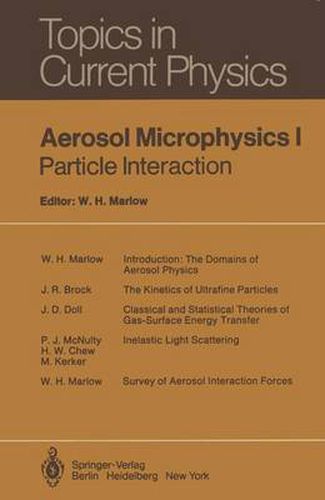Readings Newsletter
Become a Readings Member to make your shopping experience even easier.
Sign in or sign up for free!
You’re not far away from qualifying for FREE standard shipping within Australia
You’ve qualified for FREE standard shipping within Australia
The cart is loading…






This title is printed to order. This book may have been self-published. If so, we cannot guarantee the quality of the content. In the main most books will have gone through the editing process however some may not. We therefore suggest that you be aware of this before ordering this book. If in doubt check either the author or publisher’s details as we are unable to accept any returns unless they are faulty. Please contact us if you have any questions.
The suggestion by Dr. Franklin S. Harris, Jr. , that these books be written arose pursuant to the editor’s plaints that despite the implicitly or explicitly ack nowledged importance of both aerosols and particulate matter in innumerable domains of technology and human welfare, investigations of these subjects were generally not supported independently of the narrowest conceivable domains of their appli cations. Frank Harris, who has long been a contributor in one of the important domains of aerosol macrophysics, atmospheric optics, challenged the editor to elaborate his views. Ideally, they would have taken the form of a monograph; however, there is as yet an insufficient body of information to present a unified treatment. At the same time, substantial efforts are in progress in the component fields to hold the promise for the emergence of unifying elements which will even tually facilitate their presentation to be made with a high degree of integrity. There are numerous pertinent and systematic tie-ins between project-oriented aerosol work and basic physical investigations which are themselves quite closely akin to much classical and current work in physical science. The most significant aspect of these tie-ins is their potential for making substantial contributions to the functional needs of the applications areas while stimulating significant questions of basic physics. For this to be possible, it is necessary that the most relevant areas of physics be identified in such a manner as to make clear their re levance for aerosol-related studies and vice versa.
$9.00 standard shipping within Australia
FREE standard shipping within Australia for orders over $100.00
Express & International shipping calculated at checkout
This title is printed to order. This book may have been self-published. If so, we cannot guarantee the quality of the content. In the main most books will have gone through the editing process however some may not. We therefore suggest that you be aware of this before ordering this book. If in doubt check either the author or publisher’s details as we are unable to accept any returns unless they are faulty. Please contact us if you have any questions.
The suggestion by Dr. Franklin S. Harris, Jr. , that these books be written arose pursuant to the editor’s plaints that despite the implicitly or explicitly ack nowledged importance of both aerosols and particulate matter in innumerable domains of technology and human welfare, investigations of these subjects were generally not supported independently of the narrowest conceivable domains of their appli cations. Frank Harris, who has long been a contributor in one of the important domains of aerosol macrophysics, atmospheric optics, challenged the editor to elaborate his views. Ideally, they would have taken the form of a monograph; however, there is as yet an insufficient body of information to present a unified treatment. At the same time, substantial efforts are in progress in the component fields to hold the promise for the emergence of unifying elements which will even tually facilitate their presentation to be made with a high degree of integrity. There are numerous pertinent and systematic tie-ins between project-oriented aerosol work and basic physical investigations which are themselves quite closely akin to much classical and current work in physical science. The most significant aspect of these tie-ins is their potential for making substantial contributions to the functional needs of the applications areas while stimulating significant questions of basic physics. For this to be possible, it is necessary that the most relevant areas of physics be identified in such a manner as to make clear their re levance for aerosol-related studies and vice versa.